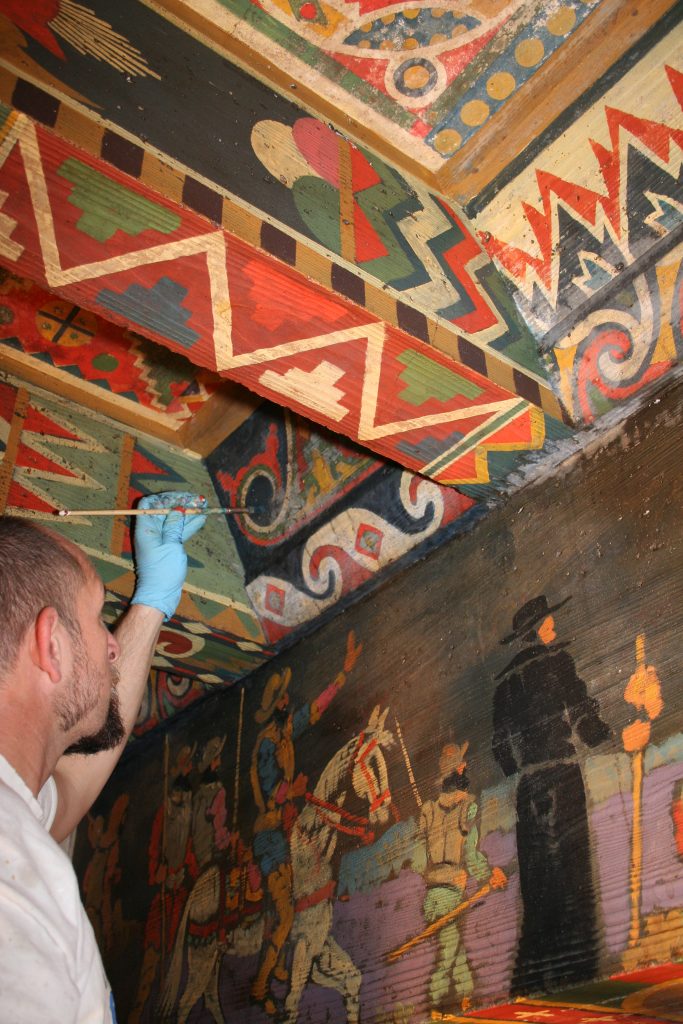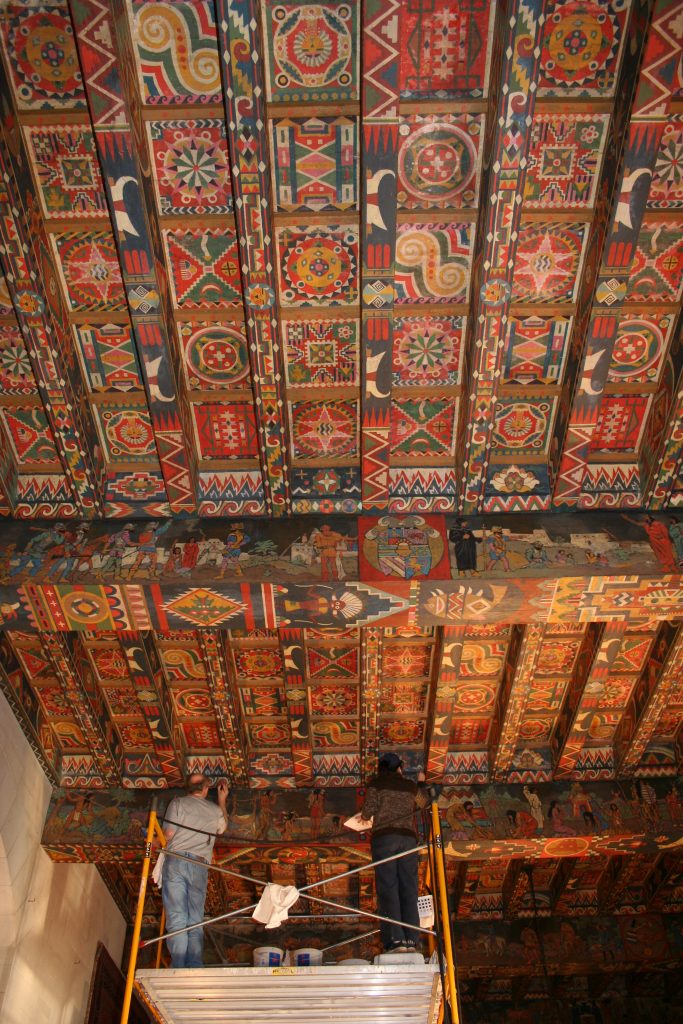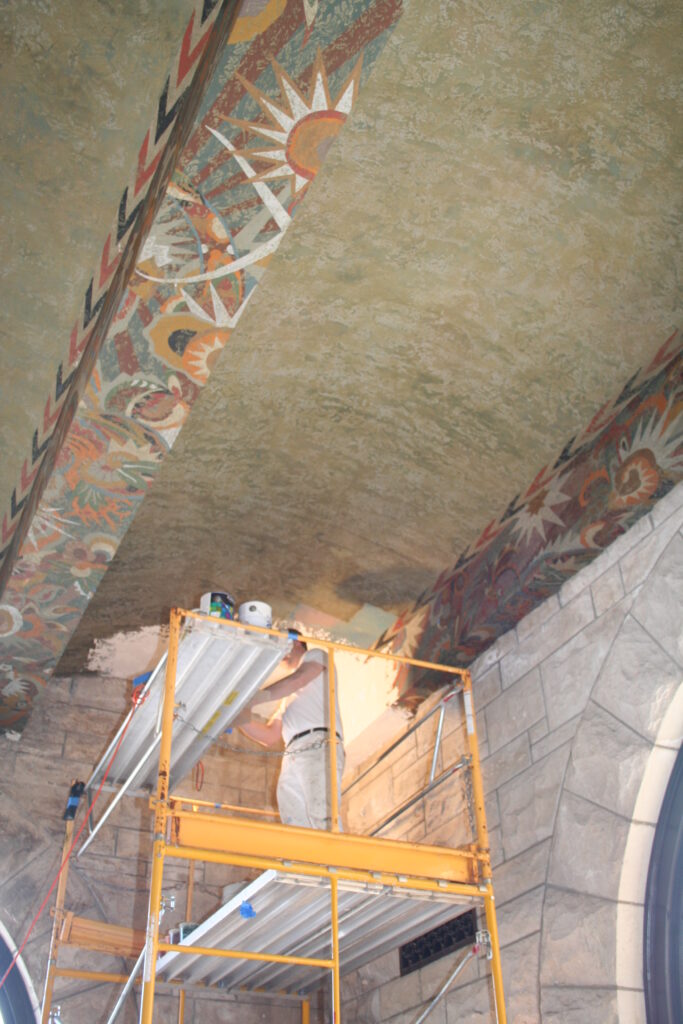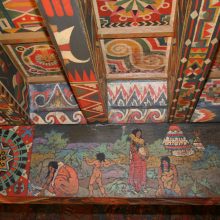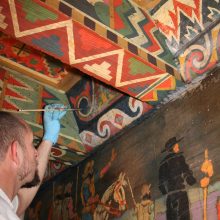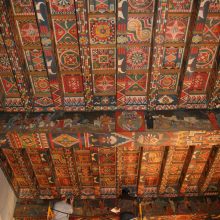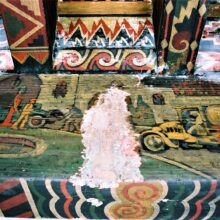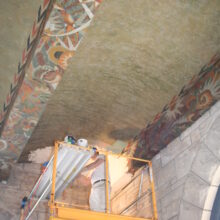E. W. Marland Mansion
Built by oil baron and philanthropist Ernest Whitworth (E.W.) Marland, as a display of wealth at the peak of the 1920s oil boom, the house is one of the largest residences in the southwestern United States, and is known as the “Palace on the Prairie.” Master architect John Duncan Forsyth, along with artists, decorators, and sculptors of international reputation combined their talents to create the Marland Estate, constructed 1925 to 1928. All of the decorative paint work was completed by Vincent Maragliotti, an Italian painter who emigrated to the United States when he was just 17. Maragliotti’s work can be seen at many notable locations including the Pennsylvania State Capitol, multiple Shubert theaters in New York, and the Waldorf-Astoria just to name a few. The Marland Mansion serves as a Mediterranean Revival-style architectural wonder, designated a National Historic Landmark in 1973, that now functions as a museum.
EverGreene’s scope of work included the conservation and restoration of four ceilings at the E.W. Marland Mansion—the North and South Salons on the first level and the Inner and Outer Lounges on the lower level. The main goal was to return the ceilings to their original aesthetic state while preserving as much of the historic fabric as possible. During the investigation phase, EverGreene conducted a paint analysis in order to clarify which elements of the existing presentation were original and which elements of the painting and gilding had been over-painted and determine which elements needed to be conserved or re‐integrated.
Our conservators also performed a substrata conditions survey including physical sounding tests of the surface to identify the current conditions, including the different types of instability and existing pathologies (interlayer cleavage, delamination from wall render, water damage, surface friability, efflorescence, etc.) A conservation feasibility study of the painted surfaces determined the feasibility of conserving the painted ceilings through cleaning tests, methods for stabilization of original flaking paint, as well as the removal of non‐historic over-paint and non‐original and discolored varnish.
Implementation phase included plaster consolidation, replication, and installation of missing ornamental plaster (profiling, sculpting, mold making, and casting), removal of efflorescence and other substrata repairs; surface conservation cleaning, overpaint removal, infilling, and inpainting to restore the decorative painting scheme. Decorative inpainting included stenciling, hand painting, lining, gilding, and trompe l’oeil.
The Inner Lounge ceiling is comprised of concrete beams, plaster ceiling flats, and original decorative painting. The scope of work included: plaster consolidation, replication, and installation of missing ornamental plaster (profiling, sculpting, mold-making, and casting), removal of efflorescence and other substrata repairs; removal of discolored varnish coating; application of a reversible isolating barrier, infilling and in-painting to match the existing colors; and application of a non‐yellowing unifying surface coat.

